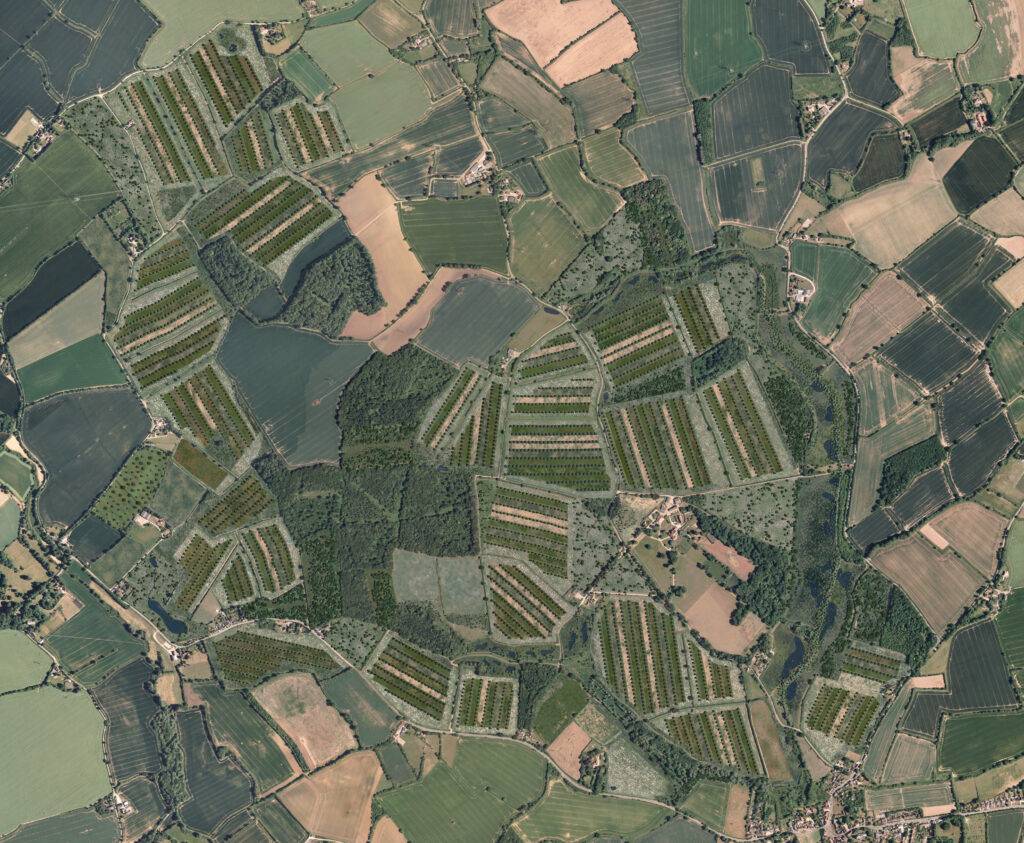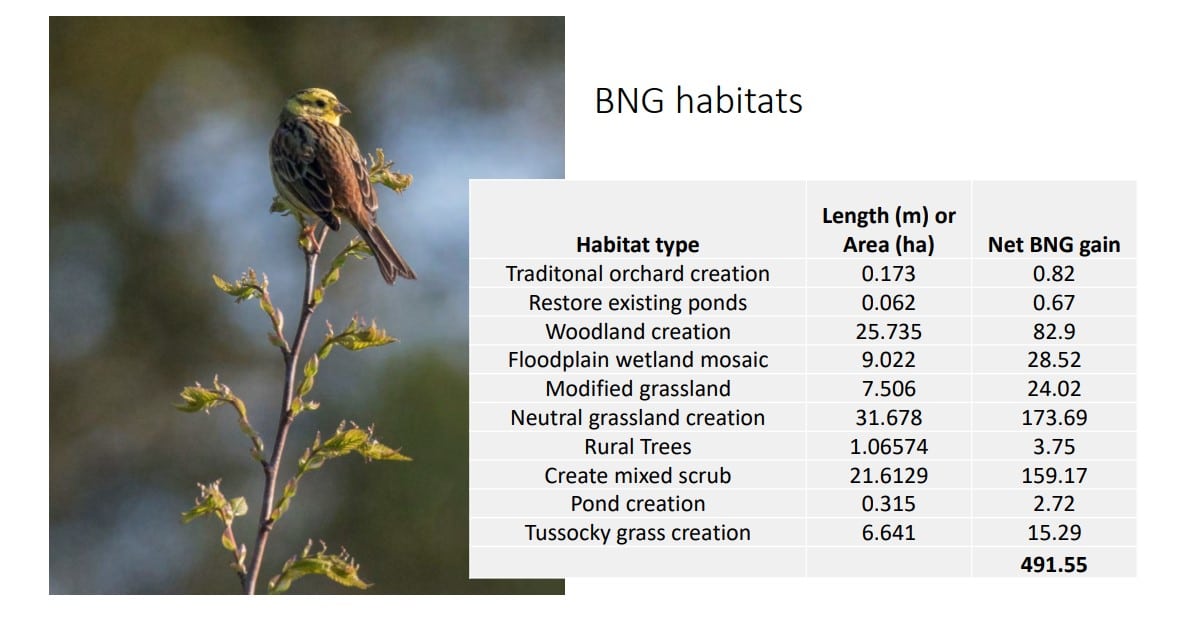Project Summary
Spains Hall Estate is a 2,000-acre estate in Essex which has been integrating environmental land management under its current Estate Manager, Archie Ruggles-Brise. In 2022 the Estate embarked on a 50+ year habitat creation programme and has been generating Biodiversity Net Gain (BNG) units for sale to local developers. The Estate plans to generate over 500 BNG units over 100 hectares.
The Estate was part of Natural England’s Biodiversity Net Gain pilot, which gave access to funding and project support including an ecologist to help develop a farm management plan and an external valuer to help with financial planning. The Estate is implementing a variety of interventions to create a diversity of habitat types including ponds, orchards, grasslands and wetlands.
Acknowledgements
With many thanks for their time and insight on this case study:
Archie Ruggles-Brise Farmer, Estate Manager
Published 10/04/2024
How did Spains Hall Estate measure its Biodiversity Net Gain potential?
After conducting an initial assessment of the habitat creation potential across the estate, Spains Hall needed to generate a robust, ground-truthed baseline of the estate’s natural capital to inform the design of its BNG projects. The estate had been chosen to be one of five BNG pilot sites to inform the design of the UK’s BNG legislation. Being a part of this pilot gave the estate access to an external ecologist of their choice to conduct its baselining. The ecologist they chose specialised in working with the farmland environment which was important to Ruggles-Brise. This helped them develop a plan that would benefit the overall farm business and mitigate wider environmental risks to the farm.
The ecologist initially identified ecologically important sites across the estate. These were then overlaid with sites that were unproductive or no longer being farmed. These sites were also analysed using the initial assessment done by Atkins including soil typology and land use history to identify any risks to potential projects. See more about the initial assessment in Spains Hall Estate’s Milestone 1 case study.
The Estate’s BNG baselining cost £25,000 across the whole estate and was conducted using Defra’s Biodiversity Metric 2.1. The initial baseline was paid for through a Natural England BNG Credits pilot grant. As the metric has been updated, the estate has needed to conduct additional measurements for versions 3.1. and 4.0. and has paid for this itself but also secured further funding through the Credits pilot. Updating their measurements cost between £5 – £10k and took 100-200 hours of labour time. The estate was able to use the data collected to conduct their Countryside Stewardship assessment. Further information about Countryside Stewardship and the upcoming round three of the NEIRF which will be directed at farmers can be found in the Policy and Regulation section of the toolkit.
What sort of habitat or environmental change did the Estate want to create through BNG?
The aims of Spains Hall estate were to establish increased biodiversity on the farm to combat pests and disease, reduce the need for fertiliser and improve hydrology. The specific interventions taken can be seen in the table below:
How will Spains Hall Estate manage the new habitats, once works are done?
Nature markets projects need to be maintained throughout the length of the contracts. The responsibility of maintenance and monitoring of the BNG sites will fall to the Estate Manager. Much of the maintenance will be done through agricultural practices such as grazing but Ruggles-Brise expects some cutting and tree replacement to be required. To develop a monitoring plan, the estate is using a template plan which Natural England is testing ahead of BNG becoming mandatory in January 2024. The estate is following measurement and monitoring guidelines developed by CIEMM which they view as robust and credible. The estate’s financial planning indicated that 41% of project costs are in initial capital investment with the remaining 59% composed of ongoing management and monitoring costs.


